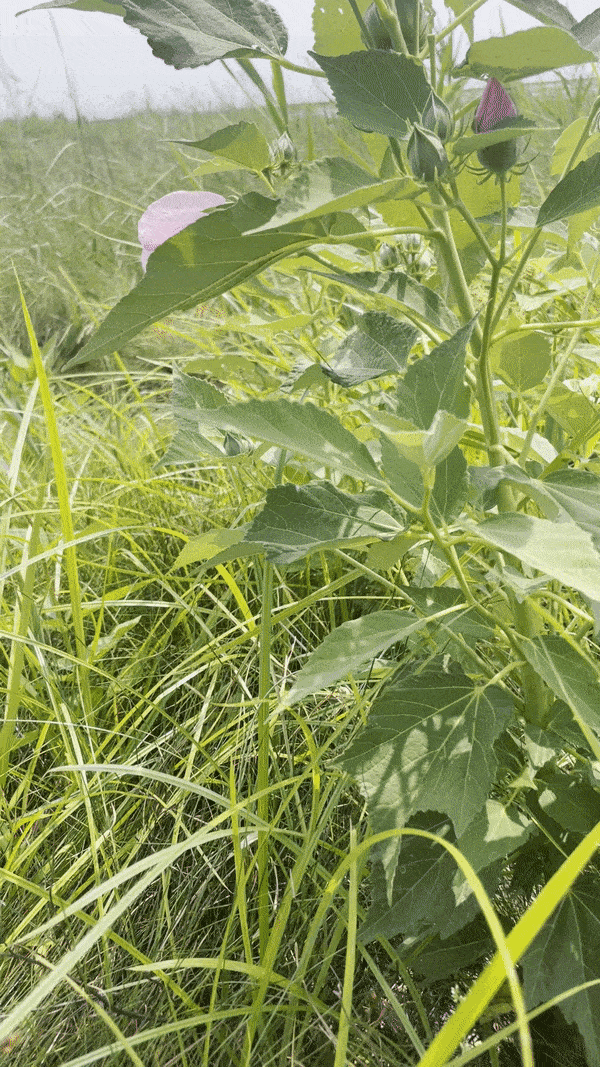In this blog post, Madeline Kollegger, a PhD candidate at the University of Connecticut, talks about innovative research to protect salt marsh habitat from sea level rise at the Great Meadows Marsh in Stratford, CT. The project is supported by the Long Island Sound Study.
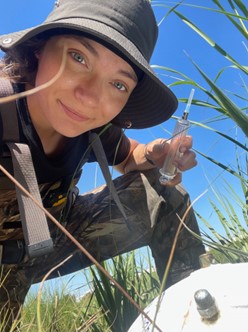
Hey there, I’m Madeline Kollegger, a 3rd year PhD candidate in the Natural Resources and the Environment department at the University of Connecticut. I’m part of Dr. Ashley Helton’s research lab, studying the best ways to restore Long Island Sound marshes. In this blog post I describe the work I do as part of a team monitoring a restoration project at Great Meadows Marsh in Stratford, CT.
We pick our way across the marsh, avoiding fiddler crabs, and mucky spots. Our destination is a patch of elevated spots of ground, human made topography we call hummocks. If we had come out a few hours earlier, we would be wading through inches of tidewater, and the hummocks would be islands, but at low tide we have no issue. This is an area of marsh that has been restored using a technique called thin layer placement.
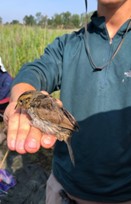
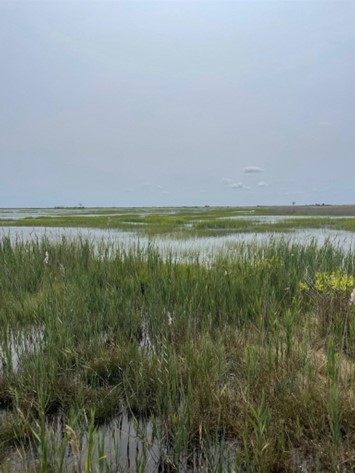
Marshes experience that fluctuation of high and low tide twice a day in Southern New England, with much of the ground flooding in every high tide. The hummocks were created to be constant areas of the marsh that would not get wet – providing a refuge for animals (such as the globally endangered saltmarsh sparrow) and high marsh plant species (such as Spartina patens, also known as saltmeadow cordgrass). (Cheyenne Ellis wrote a great article following the marsh after the restoration, and covered Great Meadows’ history and need for restoration.) As climate change drives rising sea levels, increasing the elevation of coastal marshes prevents them from drowning. Increasing the elevation is a solution to a new problem—sea levels have been rising and falling for millenia without entire losses of coastal marshes. What is different now?
We are the difference. People decided that the coastlines were beautiful places and chose to move to the water. In the places we didn’t drain the marshes to build on, we built right to the edge—trapping the marsh between concrete and a watery grave. See, if humans had not developed next to marshes, a rise in sea level would prompt a phenomenon called marsh migration, where the plants and entire ecosystem migrate landwards.
And that leads us back to thin layer placement. While adding sediment to the top of the marsh doesn’t let the marsh migrate landward, it does elevate it out of the rising sea. This is the focus of the research I am doing as part of my PhD work at the University of Connecticut.
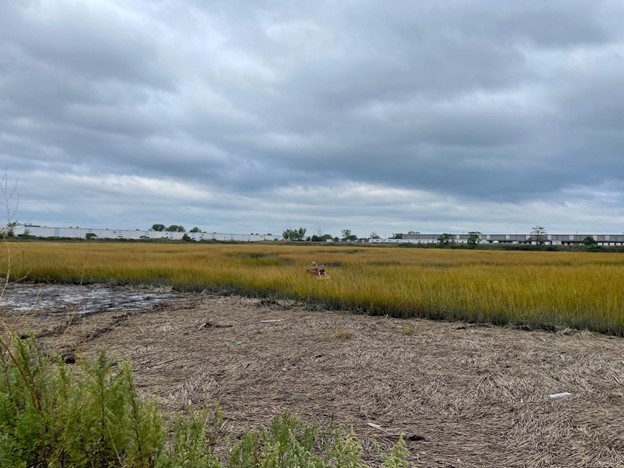
Thin layer placement is a new restoration technique in New England, so there are lots of things to learn about how it will impact our marshes. The vigorous growth of vegetation at the hummocks keeps the sediment in place, and will protect it into the future as sea level continues to rise. When the project was initially designed, they accounted for the current predicted sea level rise, so the elevation should be good for the foreseeable future.
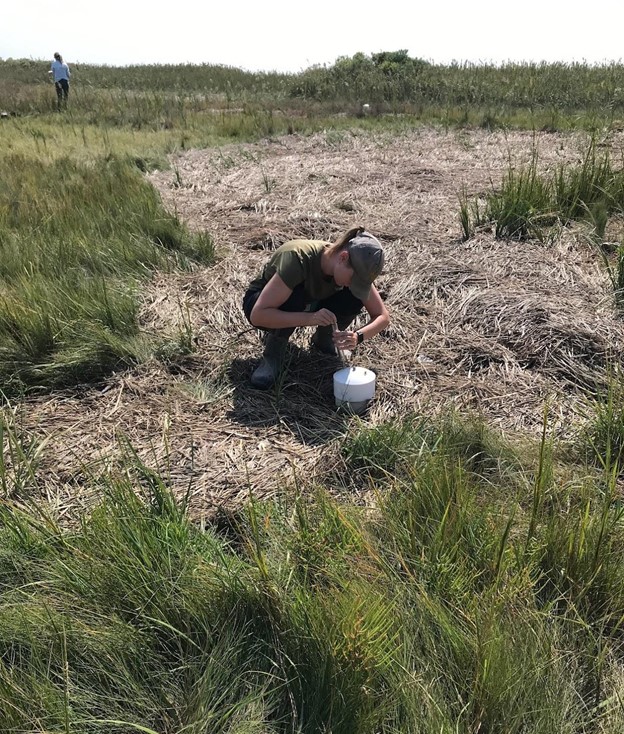
Our team has been gathering all kinds of data the last three summers to understand any impacts from the project, or changing climate. We take greenhouse gas samples, soil samples, and conduct vegetation surveys to see how the restoration changes gas fluxes, soil characteristics, and plant communities, and to see how long it takes for the marsh to recover from the disturbance of being restored. Greenhouse gases are always of interest in wetland studies – trying to get at that ever present question “source or sink” for carbon: “Is the marsh a carbon sink absorbing more carbon than it releases, or a carbon source releasing more carbon than it absorbs?” Fluxes of carbon and other gases off coastal marshes in New England are generally understudied, so our work is aimed at filling that gap, and seeking to answer the source or sink question—especially as it relates to restoration. (A brief video of the static chamber method can be found below).
On the hummocks the soil is too dry to take water samples out of the ground (like we do at other sites), so we take soil samples and extract nutrients to understand what nutrients (like nitrogen and phosphorus) are available to plants. This process is called KCl extraction, and a video can be found here on YouTube.
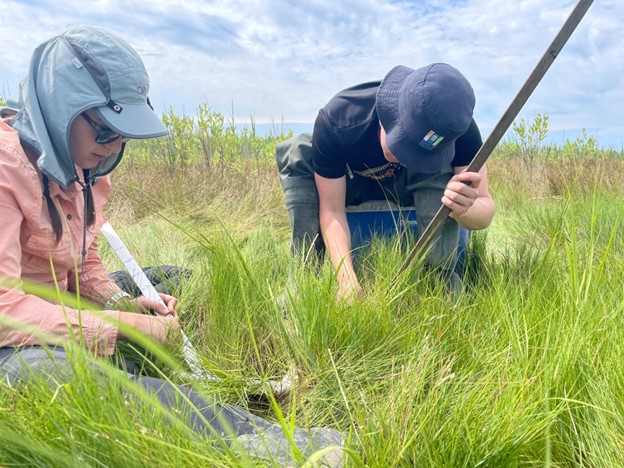
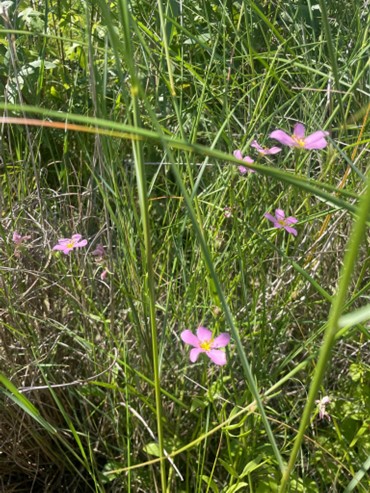
In the year since the restoration work using hummocks were completed, we have already found the endangered Sabatia stellaris, or Marsh Pink hidden amongst vegetation that has rebounded with relish. The restoration has incredible biodiversity, well beyond the plants that were initially planted. Our understanding of the greenhouse gasses coming off the marsh is still in progress, but the restoration of drowning marsh into habitat, holds hope that the marsh will live up to its potential as a blue carbon system – which are known to capture and store carbon more than other systems. Birds fly over the marsh, with the marsh wren, and clapper rail already using the vegetation on the hummocks. One day we even spotted a rabbit. A year is too early to tell how the marsh will recover, and there are always opportunities for adaptive management, but looking across the landscape is beautiful.
